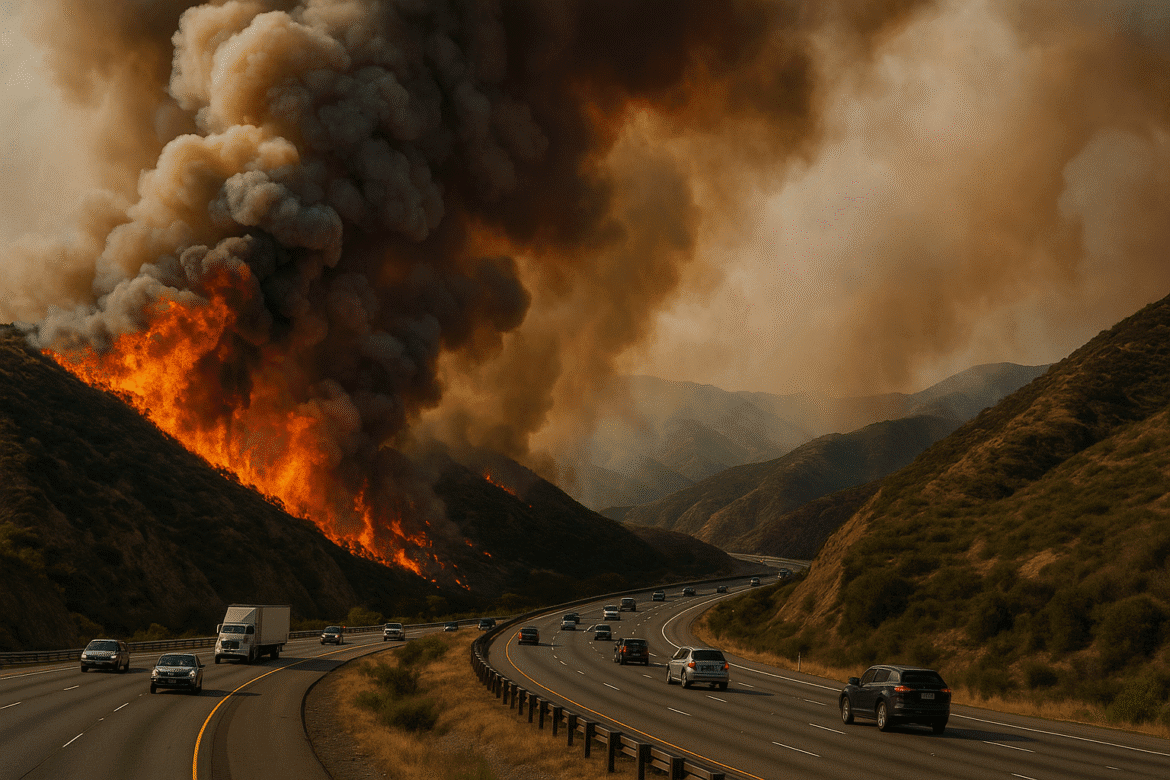Rapid Spread of the Hughes Fire Near Castaic
On January 22, 2025, the Hughes Fire broke out near Castaic, California, rapidly spreading across 10,396 acres of land and threatening nearby communities. The fire, fueled by dry conditions and strong winds, prompted mandatory evacuations for residents in the area as the flames quickly advanced. Local authorities and emergency services worked diligently to evacuate residents and protect homes from the encroaching fire.
The rapid spread of the blaze created a dire situation for the communities of Castaic, Val Verde, and surrounding areas. As winds continued to push the fire forward, firefighters and first responders faced immense challenges in attempting to contain the flames and prevent further destruction.
Evacuations and Public Safety Efforts
Evacuation orders were issued immediately for those living in areas directly threatened by the fire, with thousands of residents forced to leave their homes and seek refuge in emergency shelters. The fire’s swift movement left little time for preparation, and many evacuees were forced to abandon their homes with little notice.
Local shelters were set up to house the displaced, while authorities also urged residents to stay away from evacuation zones to allow emergency crews to work without interference. With winds gusting through the region, downed power lines and poor visibility added to the dangers posed by the wildfire.
Firefighting Efforts and Progress
By the end of the day on January 22, the Hughes Fire was 36% contained, marking a significant step toward controlling the blaze. However, the fire remained active and unpredictable, with the Santa Ana winds continuing to exacerbate conditions. Firefighters deployed aircraft and ground crews to battle the blaze from multiple fronts, focusing on creating fire lines and building defensible spaces around high-risk areas.
Despite their best efforts, the extreme weather and dry terrain made firefighting difficult, especially in areas where the fire had spread into rugged hillsides. Crews worked through the night to contain the fire and prevent it from reaching more populated areas, though the risk remained high.
Environmental and Community Impacts
The Hughes Fire had significant environmental impacts, destroying large areas of wildlife habitat and vegetation. The fire’s swift spread also raised concerns about potential soil erosion and the risk of flooding once the area receives rainfall. Rebuilding the affected landscapes will require ongoing environmental recovery efforts, and local officials are already beginning to plan for restoration in the coming months.
In addition to the environmental damage, the fire posed an ongoing threat to the region’s infrastructure, including utilities and transportation routes. Several major roads and highways were closed due to the fire’s proximity, and power outages affected areas near the fire zone.
Continued Challenges and Risks
The Hughes Fire highlights the growing challenges that Southern California faces in managing wildfire risks, particularly as climate change exacerbates dry conditions and increases the intensity of wildfires. Local communities are being urged to stay vigilant as the fire continues to burn, and residents in surrounding areas are reminded to prepare for potential evacuations in case the fire shifts direction.
The ongoing wildfire season in California shows no signs of letting up, and authorities continue to call for better fire prevention measures, including clearing brush, building stronger fire-resistant infrastructure, and improving public awareness about fire safety.
Source:
Fox Weather – Hughes Fire Castaic January 2025

